Exhibition dates: 17th June – 25th September 2016
Curator: Julian Cox
Danny Lyon (American, b. 1942)
Self-portrait, Chicago
1965/1995
Gelatin silver print montage
Image: 31.2 x 27.8cm (12 1/4 x 10 15/16 in.)
Mount: 50.8 x 40.6cm (20 x 16 in.)
Collection of the artist
This man is a living legend. What a strong body of socially conscious work he has produced over a long period of time. Each series proposes further insight into the human condition – and adds ‘value’ to series that have gone before. It is a though the artist possesses the intuition for a good story and the imagination to photograph it to best advantage, building the story over multiple encounters and contexts to form a thematic whole.
In a press release for a currently showing parallel exhibition titled Journey at Edwynn Houk Gallery the text states, “Continuing in the tradition of Walker Evans and Robert Frank, Lyon forged a new style of realistic photography, described as “New Journalism,” where the photographer immerses himself in his subject’s world.” This reference to immersion is reinforced by the second quotation below, where “the power of Lyon’s work has often derived from his willingness of immerse himself entirely in the cultures and communities he documents.”
While the observation is correct that the artist immerses himself in the cultures and communities he documents, this is different to the tradition of Robert Frank and to a lesser extent, Walker Evans. Frank was a Swiss man who imaged his impressions of America on a road trip across the country. His “photographs were notable for their distanced view of both high and low strata of American society” which pictured the culture as both alienating and strange, “skeptical of contemporary values and evocative of ubiquitous loneliness”. This is why The Americans had so much power and caused so much consternation when it was first released in 1959 in America, for it held up a mirror to an insular society, one not used to looking at itself especially from the position of an “outsider” – where the tone of the book was perceived as derogatory to national ideals – and it didn’t like what it saw. The American Walker Evans was also an outsider photographing outsiders, journeying through disparate towns and communities documenting his impressions how I can I say, subjectively with an objective focus, at one and the same time. He never immersed himself in the culture but was an active observer and documenter, never an insider.
Lyon was one of the first “embedded” social documentary photographers of the American street photography movement of the 1960s who had the free will and the social conscience to tell it like it is. His self-proclaimed “advocacy journalism” is much more than just advocacy / journalism. It is a vitality of being, of spirit, an inquiry of the mind that allows the artist to get close, both physically and emotionally, to the problems of others through becoming one with them – and then to picture that so that others can see their story, so that he can “change history and preserve humanity.” But, we must acknowledge, that humanity is mainly (good looking) males: outlaw motorcycle clubs, mainly male prisons, mainly male civil rights, tattoo shops, and male Uptown, Chicago. Women are seemingly reduced to bit-players at best, singular portraits or standing in the background at funerals. This is a man’s world and you better not forget it…
Having said that, can you imagine living the life, spending four years as a member of the Chicago Outlaw Motorcycle Club. How exhilarating, how enmeshed with the culture you would become – the people, the travel, the ups and downs, the life, the danger – and then when you get photographs like Funny Sonny Packing with Zipco, Milwaukee (1966, below) with the manic look in Funny Sonny’s eyes, how your heart would sing. If I had to nominate one image that is for me the epitome of America in the 1960s it would be this: Crossing the Ohio River, Louisville (1966, below): all Easy Rider (an 1969 American road movie) encapsulated in one image. The structure and modernism / of the two bridges frames / the speeding / wicked bike / helmet lodged over the headlight; the man / wearing a skull and crossbones emblazoned jacket / helmet-less / head turned / behind / hair flying in the wind / not looking where / he is going / as though his destiny: unknown.
Danny Lyon IS one of the great artists working in photography today. He is a rebel with his own cause. Through his vital and engaging images his message to the future is this: everyone has their own story, their own trials and tribulations, each deserving of empathy, compassion, and non-judgemental acceptance. Prejudice has no voice here, a lesson never more pertinent than for America today as it decides who to elect – a woman who has fought every inch of the way or a narcissistic megalomaniac who preaches hate to minorities.
Dr Marcus Bunyan
Many thankx to the Whitney Museum of American Art for allowing me to publish the photographs in the posting. Please click on the photographs for a larger version of the image.
“Closeness, both physical and emotional, is a recurring theme throughout the 175 works in “Message to the Future,” Lyon’s Whitney Museum retrospective, a quietly brilliant affair curated with panache by Julian Cox. (Later this year, the show will travel to the Fine Arts Museums in San Francisco, which organized it; Elisabeth Sussman oversaw the Whitney installation.) We see here a photographer who was witness to a changing America and, occasionally, other places in the world. Since the early ’60s, Lyon has been infiltrating outsider groups – talking to and photographing bikers, Texas prison inmates, and hippies, and learning from them by becoming close with them. It’s as if Lyon has no sense of personal space. That, as this revelatory show proves, is his greatest attribute…
Lyon is a deft stylist who cares deeply about his subjects, to the point of exchanging letters with them for years after taking their pictures. What results is something more intimate, more political, and, in some ways, better than traditional photojournalism – a fuller portrait of America since the ’60s.”
Alex Greenberger. “Close Encounters: The Danny Lyon Retrospective at the Whitney Museum Is Quietly Brilliant,” on the ARTnews website August 17, 2016 [Online] Cited 16/02/2023
“Self-taught, and driven by his twin passions for social change and the medium of photography, the power of Lyon’s work has often derived from his willingness of immerse himself entirely in the cultures and communities he documents. This was evident early on in his series ‘Bikeriders’ (1968; reissued in 2003 by Chronicle Books), which evolved from four years spent as a member of the Chicago Outlaw Motorcycle Club. And ‘Conversations with the Dead’ derived from his close study of the Texas prison system; it also revealed Lyon’s novel and distinctive approach to the photobook, which often sees him splicing images with texts drawn from various sources, including interviews, letters, and even fiction.”
Text from the Edwynn Houk Gallery website [Online] Cited 21/09/2016. No longer available online
Danny Lyon (American, b. 1942)
Self-Portrait, New Orleans, 1964
1964
Gelatin silver print
18.2 x 12.2cm (7 3/16 x 4 13/16 in.)
Collection of the artist
In his 1981 book, “Danny Lyon: Pictures From the New World,” he wrote of starting out in the early ’60s. “Photography then seemed new and exciting, and all America, which I regarded with mystery and reverence, lay before me.”
That sense of newness and excitement fills the show. What we’re discovering now, Lyon was discovering then – not just seeing or observing, but discovering, with the sense of revelation that brings. Mystery and reverence are here, too, but complicatedly. Framing them – debating with them? – are the clarity of precision the camera affords and a skepticism born of a forthrightly ’60s sensibility. Several photographs of the Occupy movement attest to how vigorous that sensibility remains…
He was working as a documentarian but not a photojournalist. That’s an important distinction. These images are implicitly polemical – inevitably polemical, too. Rarely in our nation’s history has the distinction between what’s right and what’s wrong been as clear cut. Yet then as now, people matter more to Lyon than any ideological stance. Outsiders attract Lyon and populate the show: civil rights demonstrators, transgender people (in Galveston, Texas, of all places), lower Manhattan demolition crews, inmates, undocumented workers, Indians, Appalachian whites transplanted to Chicago, motorcycle gangs…
Enclosure and entrapment are not for Lyon – nor, for that matter, is the absence of people (a very rare condition in his work). A larger restlessness in Lyon’s career reflects the energy so often evident within the frame – within the frame being another form of enclosure and entrapment. The South, Chicago, lower Manhattan, Texas, New Mexico, China, Haiti, Latin America share space in the show. Even so, sense of place doesn’t signify as much for Lyon as a sense of a place’s inhabitants. More likely he’d say that the two are indistinguishable. Looking at his pictures, you can see why he’d think so.”
Mark Feeney. “Outsiders fill compelling Danny Lyon photography show,” on the Boston Globe website 8th July 2016 [Online] Cited 10/09/2016
Danny Lyon (American, b. 1942)
Arrest of Eddie Brown, Albany, Georgia
1962
Gelatin silver print
Image: 22 x 31.7cm (8 5/8 x 12 1/2 in.)
Sheet: 27.9 x 35.6cm (11 x 14 in.)
Collection of the artist
Eddie Brown former gang leader and movement activist is arrested.
“The first sit-in arrests I see and photograph are those of Eddie Brown, a former Albany gang leader, and a visitor from the North. Both have volunteered to be arrested for the photographs. The picture of Eddie Brown, calmly being carried off by the Albany police, is widely distributed as the image of the classic non-violent arrest, Georgia.”
~ Danny Lyon
“Eddie Charles Brown, Jr., a great-souled human being committed to fighting the oppression of all people from Mississippi to South Africa, died at his home on November 23, 2011. In political circles, Ed was respected for his enduring commitment to our people. As a consequence of his tireless devotion to, and success in advancing the culture and economic progress of poor black folk, Ed Brown was widely recognised as among the most, incorruptible, responsible, resourceful and effective of the activist leaders of the Movement. As his SNCC colleagues said of him, “More than most, Ed’s life embodies and exemplifies to a remarkable degree, the principle of undying love for our people both here and in the Motherland.” …
A native of Louisiana, Ed was born on August 19, 1941, in New Orleans and raised in Baton Rouge to Thelma Warren and Eddie Charles Brown, Sr. Ed’s historical efforts to fight segregation and all forms of oppression as well as to empower Black people started in 1960 as a young student at Louisiana’s Southern University. He and 16 other classmates confronted the University and staged a sit-in protesting the racial segregation prevalent in Louisiana at the time. After he and the others were arrested, expelled and banned from enrolling in any university in Louisiana Ed began the ongoing struggle for justice, which would define his entire life. This expulsion led Ed to Howard University in Washington, D.C. in 1961, where he landed on the front line of the Civil Rights Movement. Ed was an active member of the Nonviolent Action Group, the SNCC affiliate at Howard.
As a leader and field secretary for the Student Nonviolent Coordinating Committee (SNCC) he fought to win constitutional rights for Blacks and all disenfranchised people. Ed always proclaimed that he was “fighting fire with a feather,” but he knew he would prevail because he often said, ironically, he was protected by “asbestos gloves.””
Anonymous. “In Memoriam: Eddie Charles Brown, Jr.,” on the SNCC Legacy Project website Nd [ONline] Cited 04/04/2024
The most comprehensive retrospective of the work of American photographer, filmmaker, and writer Danny Lyon in twenty-five years debuts at the Whitney on June 17, 2016. The first major photography exhibition to be presented in the Museum’s downtown home, Danny Lyon: Message to the Future is organised by the Fine Arts Museums of San Francisco, where it will make its West Coast debut at the de Young Museum on November 5, 2016. The exhibition assembles approximately 175 photographs and is the first to assess the artist’s achievements as a filmmaker. The presentation also includes a rare look at works from Lyon’s archives, including vintage prints, unseen 16mm film footage made inside Texas prisons, and his personal photo albums. A leading figure in the American street photography movement of the 1960s, Lyon has distinguished himself by the personal intimacy he establishes with his subjects and the inventiveness of his practice.
Photographer, filmmaker, and writer Danny Lyon (b. 1942) has over the past five decades presented a charged alternative to the sanitised vision of American life presented in the mass media. Throughout, he has rejected the standard detached humanism of the traditional documentary approach in favour of a more immersive, complicated involvement with his subjects. “You put a camera in my hand,” he has explained, “I want to get close to people. Not just physically close, emotionally close, all of it.” In the process he has made several iconic bodies of work, which have not only pictured recent history but helped to shape it.
Lyon committed intensively to photography from the beginning. In 1962, while still a student at the University of Chicago, he hitchhiked to the segregated South to make a photographic record of the civil rights movement. He went on to photograph biker subcultures, explore the lives of the incarcerated, and document the architectural transformation of Lower Manhattan. He has travelled to Latin America and China, and has lived for years in New Mexico; the work he has made throughout these journeys demonstrates his respect for the people he photographs on the social and cultural margins.
Message to the Future, shaped in collaboration with the artist, incorporates seldom-exhibited materials from Lyon’s archive, including rare vintage prints, previously unseen 16mm film footage made inside the Texas prisons, his personal photo albums, and related documents and ephemera. In his roles as a photographer, filmmaker, and writer, Lyon has reinvented the expectations for how the still photographic image can be woven together with journalism, books, films, and collage to present a diverse record of social customs and human behaviour. His work, which he continues to make today, reveals a restless idealist, digging deep into his own life and those of his subjects to uncover the political in the personal and the personal in the political.
Text from the Whitney Museum of American Art
Civil rights
In the summer of 1962, Lyon hitchhiked to Cairo, Illinois, to witness demonstrations and a speech by John Lewis, chairman of the Student Nonviolent Coordinating Committee (SNCC), one of the most important organisations driving the civil rights movement of the early 1960s. Inspired to see the making of history firsthand, Lyon then headed to the South to participate in and photograph the civil rights movement. There, SNCC executive director James Forman recruited Lyon to be the organisation’s first official photographer, based out of its Atlanta headquarters. Traveling throughout the South with SNCC, Lyon documented sit-ins, marches, funerals, and violent clashes with the police, often developing his negatives quickly in makeshift darkrooms.
Lyon’s photographs were used in political posters, brochures, and leaflets produced by SNCC to raise money and recruit workers to the movement. Julian Bond, the communications director of SNCC, wrote of Lyon’s pictures, “They put faces on the movement, put courage in the fearful, shone light on darkness, and helped make the movement move.”
Danny Lyon (American, b. 1942)
Student Nonviolent Coordinating Committee (SNCC) Sit-In, Atlanta
1963
Gelatin silver print
Image: 16.1 x 24cm (6 3/8 x 9 1/2 in.)
Sheet: 20.3 x 25.4cm (8 x 10 in.)
Collection of the artist
Danny Lyon (American, b. 1942)
The Leesburg Stockade, Leesburg, Georgia
1963
Gelatin silver print
Image: 17.5 x 26cm (6 7/8 x 10 3/16 in.)
Sheet: 27.9 x 35.6cm (11 x 14 in.)
Collection of the artist
Danny Lyon (American, b. 1942)
Abernathy, Shuttlesworth (SCLC), King and Wilkinson (NAACP)
1963
Gelatin silver print
Danny Lyon (American, b. 1942)
Voting Rights Demonstration, Organized by the Student Nonviolent Coordinating Committee (SNCC), Selma, Alabama
October 7, 1963
Gelatin silver print
Image: 18.3 x 26.8cm (7 3/16 x 10 9/16 in.)
Sheet: 27.8 x 35.4cm (10 15/16 x 13 15/16 in.)
Whitney Museum of American Art, New York; purchase with funds from the Photography Committee
Danny Lyon (American, b. 1942)
Sheriff Jim Clark Arresting Demonstrators, Selma, Alabama
October 7, 1963
Gelatin silver print
Image: 18.4 x 27cm (7 1/4 x 10 5/8 in.)
Sheet: 27.8 x 35.4cm (10 15/16 x 13 15/16 in.)
Whitney Museum of American Art, New York; purchased with funds from the Photography Committee
Danny Lyon (American, b. 1942)
Stokely Carmichael, Confrontation with National Guard, Cambridge, Maryland
1964
Gelatin silver print
Image: 16.5 x 22.2cm (6 1/2 x 8 3/4 in.)
Sheet: 20.3 x 25.4cm (8 x 10 in.)
Collection of the High Museum of Art, Atlanta; purchase with funds from Joan N. Whitcomb
Danny Lyon (American, b. 1942)
Woman Holds Off a Mob, Atlanta
1963
Gelatin silver print
Danny Lyon (American, b. 1942)
Bob Dylan behind the SNCC office, Greenwood, Mississippi
1963
Gelatin silver print
Danny Lyon (American, b. 1942)
Arrest of Taylor Washington, Atlanta
1963
Gelatin silver print
24 x 16cm (9 7/16 x 6 1/4 in.)
Collection of the artist
Atlanta, Georgia. High school student Taylor Washington is arrested at Lebs Delicatessen. His eighth arrest.
“One of Taylor Washington’s numerous arrests is immortalised as he yells while passing before me. The photograph became the cover of SNCC’s photo book, The Movement, and was reproduced in the former Soviet Union in Pravda, captioned “Police Brutality USA.””
~ Danny Lyon
The Civil Rights movement of the 1960’s was a widespread effort to end racial segregation and discrimination against African Americans. News coverage of sit-ins and freedom rides dominated the cultural and political landscape of the United States. At this time Danny Lyon was in his early 20s and an undergraduate student at the University of Chicago. After meeting John Lewis, the chairman of the Student Nonviolent Coordinating Committee’s (SNCC’s) in Cairo, Illinois, Lyon then traveled to Mississippi, to cover voter registrations, and soon he was present at almost all of the major SNCC events during the movement. Lyon served as SNCC’s photographer from 1962 to 1964 and later documented his experiences in his book Memories of the Southern Civil Rights Movement.
Text from the Minneapolis Institute of Art Collection website
Danny Lyon (American, b. 1942)
The March on Washington
August 28, 1963
Gelatin silver print
29.8 x 20.8cm (11 3/4 x 8 3/16 in.)
Museum of Modern Art, New York; Gift of Anne Ehrenkranz
Galveston
Danny Lyon (American, b. 1942)
Pumpkin and Roberta, Galveston, Texas
1967
Gelatin silver print
Image: 23.8 x 16.1cm (6 3/8 x 9 3/8 in.)
Sheet: 20.3 x 25.4cm (8 x 10 in.)
Collection of the artist
Prisons
In 1967, Lyon applied to the Texas Department of Corrections for access to the state prisons. Dr. George Beto, then director of the prisons, granted Lyon the right to move freely among the various prison units, which he photographed and filmed extensively over a fourteen-month period. The result is a searing record of the Texas penal system and, symbolically, of incarceration everywhere.
Lyon’s aim was to “make a picture of imprisonment as distressing as I knew it to be in reality.” This meant riding out to the fields to follow prisoners toiling in the sun, as well as visiting the Wynne Treatment Centre, which housed primarily convicts with mental disabilities. He befriended many of the prisoners, listening to their stories and finding the humanity in their experiences, and still maintains contact with some of them.
Danny Lyon (American, b. 1942)
Weight Lifters, Ramsey Unit, Texas
1968
Gelatin silver print
Image: 22.4 x 33.2cm (8 7/8 x 13 1/16 in.)
Sheet: 27.7 x 35.6cm (11 x 14 in.)
Collection of the artist
Danny Lyon (American, b. 1942)
New Arrivals from Corpus Christi, The Walls, Texas
1968
Gelatin silver print
Image: 21.4 x 32cm (8 7/16 x 12 5/8 in.)
Sheet: 27.9 x 35.6cm (11 x 14 in.)
Collection of the artist
Danny Lyon (American, b. 1942)
Contents of Arriving Prisoner’s Wallet, Diagnostic Unit, The Walls, Huntsville, Texas
1968
Gelatin silver print
Image: 24.3 x 17.5cm (9 9/16 x 6 3/4 in.)
Sheet: 25.4 x 20.3cm (10 x 8 in.)
Collection of the artist
Danny Lyon (American, b. 1942)
Six-Wing Cell Block, Ramsey Unit, Texas
1968
Gelatin silver print
Image: 16 x 24cm (6 5/16 x 9 7/16 in.)
Sheet: 20.3 x 25.4cm (8 x 10 in.)
Collection of the artist
Danny Lyon (American, b. 1942)
Charlie Lowe, Ellis Unit, Texas
1968
Gelatin silver print
Image: 16.2 x 23.8cm (6 3/8 x 9 3/8 in.)
Sheet: 20.3 x 25.4cm (8 x 10 in.)
Collection of the artist
Danny Lyon (American, b. 1942)
Shakedown, Ellis Unit, Texas
1968
Gelatin silver print
21.6 x 31.3cm (8 1/2 x 12 1/4 in.)
Museum of Modern Art, New York; purchase
Danny Lyon (American, b. 1942)
Shakedown, Ramsey Unit, Texas
1968
Gelatin silver print
Image: 17 x 24.2cm (6 5/8 x 9 9/16 in.)
Sheet: 20.3 x 25.4cm (8 x 10 in.)
Collection of the artist
Danny Lyon (American, b. 1942)
Convict With a Bag of Cotton, Texas
1968
Gelatin silver print
Danny Lyon (American, b. 1942)
Two Inmates, Goree Unit, Texas
1968
Gelatin silver print
Image: 16.8 x 24cm (6 5/8 x 9 91/6 in.)
Sheet: 20.3 x 25.4cm (8 x 10 in.)
Collection of the artist
The destruction of Lower Manhattan
In late 1966 and into the summer of 1967, starting from his loft at the corner of Beekman and William Streets near City Hall Park, Lyon documented the demolition of some sixty acres of predominantly nineteenth-century buildings below Canal Street in lower Manhattan. With funding from the New York State Council on the Arts, he photographed most of the buildings that would be torn down to make way for the World Trade Center. Lyon recalled later: “I wanted to inhabit [the buildings] with feelings and give them and their demise a meaning.”
Moving from the outside of the buildings to their deserted interiors, Lyon also took pictures of the workers involved in the demolition. The photographs, together with Lyon’s journal entries, became a book, published by Macmillan in 1969 and dedicated to his close friend, sculptor Mark di Suvero. The volume’s significance lies in part in its depiction of a city – and, more broadly, a culture – cannibalising its own architectural history for the sake of development.
Danny Lyon (American, b. 1942)
View South from 100 Gold Street, New York
1967
Gelatin silver print
18.3 x 18.2cm (7 1/4 x 7 3/16 in.)
Collection of Melissa Schiff Soros and Robert Soros
Danny Lyon (American, b. 1942)
Self-Portrait in Susquehanna Hotel, Third-Floor Room with Grass, New York
1967
Gelatin silver print
18.2 x 18.2cm (7 3/16 x 7 3/16 in.)
Collection of Melissa Schiff Soros and Robert Soros
Danny Lyon (American, b. 1942)
Ruins of 100 Gold Street, New York
1967
Gelatin silver print
23.6 x 23.4cm (9 5/16 x 10 7/16 in.)
Collection of Melissa Schiff Soros and Robert Soros
The Bikeriders
Lyon purchased his first motorcycle – a 1953 Triumph TR6 – in 1962, after spending weekends watching college friend and motorcycle racer Frank Jenner compete at informal dirt track races across the Midwest. When he returned to Chicago in 1965 after leaving SNCC, Lyon joined the hard-riding, hard-drinking Chicago Outlaws Motorcycle Club and began making photographs with a goal to “record and glorify the life of the American bike rider.” With clubs like the Hells Angels making headlines for their criminal and vigilante activities at the time, bike riders were simultaneously feared for their anarchism and romanticised for their independence.
Riding with the Outlaws, Lyon attempted to capture their way of life from the inside out. Their unapologetic pursuit of freedom and libertine pleasures compelled him to get close to them as people. Lyon’s images are intimate and familiar, whether taken during rides or at clubhouse meetings. He also used a tape recorder to document the bikers speaking for themselves, unobtrusively capturing their collective voice. The resulting photographs were gathered into the now classic book of the same name, published in 1968, combining his pictures with an edited transcription of the interviews.
Danny Lyon (American, b. 1942)
Racer, Schererville, Indiana
1965
Gelatin silver print
13.9 x 20.3cm (5 1/2 x 8 in.)
Silverman Museum Collection
Danny Lyon (American, b. 1942)
Crossing the Ohio River, Louisville
1966
Gelatin silver print
20.3 x 31.8cm (8 x 12 1/2 in.)
Silverman Museum Collection
Danny Lyon (American, b. 1942)
Route 12, Wisconsin
1963
Gelatin silver print
15.6 x 23.8cm (6 1/8 x 9 1/8 in.)
Silverman Museum Collection
Danny Lyon (American, b. 1942)
Sparky and Cowboy, Schererville, Indiana
1965
Gelatin silver print
Image: 16.1 x 23.9cm (6 3/8 x 9 3/8 in.)
Sheet: 20.3 x 25.4cm (8 x 10 in.)
Collection of the artist
Danny Lyon (American, b. 1942)
Untitled (Close Up of Cal on the Road)
1966
Gelatin silver print
Danny Lyon (American, b. 1942)
Renegade’s funeral, Detroit
1966
Gelatin silver print
Danny Lyon (American, b. 1942)
Funny Sonny Packing with Zipco, Milwaukee
1966
Gelatin silver print
Danny Lyon (American, b. 1942)
Kathy, Chicago
1965 (printed 1966)
Gelatin silver print
25.8 x 25.5cm (10 1/8 x 10 1/16 in.)
Collection of the artist
Danny Lyon (American, b. 1942)
Cal on the Springfield Run, Illinois
1966 (printed 2003)
Cibachrome print
Image: 22.8 x 32.5cm (9 x 13 1/4 in.)
Sheet: 27.9 x 35.6cm (11 x 14 in.)
Collection of the artist
Danny Lyon (American, b. 1942)
Cowboy, Rogue’s Picnic, Chicago
1966
Gelatin silver print
Image: 23.5 x 15.9cm (9 1/4 x 6 1/4 in.)
Mount: 50.8 x 40.6cm (20 x 16 in.)
Collection of the artist
Danny Lyon (American, b. 1942)
Benny, Grand and Division, Chicago
1965
Gelatin silver print
24.5 x 17.2cm (9 5/8 x 6 3/4 in.)
Collection of the artist
New Mexico and the West
Lyon headed west from New York in 1969. Tired of the hectic pace of the big city and in search of new surroundings, he settled in Sandoval County, New Mexico. He developed a great admiration for the region’s close knit communities of Native Americans and Chicanos. Lyon’s photographs and, increasingly, his films reflected his growing understanding of the cross-cultural flow between these disparate groups and how they interacted with the geography of the Southwest.
With the help of his good friend, a migrant labourer named Eduardo Rivera Marquez, Lyon built a traditional adobe home for his family in Bernalillo, in the Rio Grande Valley just north of Albuquerque. As Lyon’s family grew, his children also became a frequent subject, often depicted against the dramatic Western landscape. Though Lyon moved back to New York in 1980, New Mexico would remain a centre of gravity for the artist, who returned every summer with his family to photograph and make films.
Danny Lyon (American, b. 1942)
Eddie, New Mexico
1972
Gelatin silver print
Image: 23 x 34.5cm (9 x 13 5/8 in.)
Sheet: 27.9 x 35.6cm (11 x 14 in.)
Collection of the artist
Danny Lyon (American, b. 1942)
Navajo Boy, Gallup, New Mexico
1971
Gelatin silver print
Image: 23.3 x 33.8cm (9 1/8 x 13 5/16 in.)
Sheet: 27.9 x 35.6cm (11 x 14 in.)
Collection of the artist
Danny Lyon (American, b. 1942)
Maricopa County, Arizona
1977
Gelatin silver print
Image: 22.8 x 33.5cm (9 x 13 3/16 in.)
Sheet: 27.9 x 35.6cm (11 x 14 in.)
Collection of the artist
Danny Lyon (American, b. 1942)
Stephanie, Sandoval County, New Mexico
1969/1975
Gelatin silver print (decorated)
Image: 16.7 x 25cm (6 9/16 x 9 3/4 in.)
Sheet: 27.9 x 35.6cm (11 x 14 in.)
Collection of the artist
Danny Lyon (American, b. 1942)
El Paso, Texas
1975 (printed 2015)
Pigmented inkjet print
Image: 27.9 x 40.6cm (11 x 16 in.)
Sheet: 33 x 45.7cm (13 x 18 in.)
Collection of the artist
Danny Lyon (American, b. 1942)
El Paso, Texas
1975
Films and montages
Lyon started making 16mm films in earnest in the 1970s, focusing on marginalised communities and injustice as he had in his photographs. His subjects included Colombian street kids in Los Niños Abandonados (1975) and undocumented workers from Mexico in El Mojado (1974) and El Otro Lado (1978). Lyon has explained that after leaving the Texas prisons he struggled to move forward, feeling that there were “no more worlds to conquer” in creating photography books. Filmmaking became the means by which he could continue to make sense of the beauty and inequality he saw in the world around him.
Lyon did not give up photography completely, however. He turned to assembling family albums and creating collaged works that he describes as montages, referencing the filmmaking practice of juxtaposing disparate images to form a continuous whole. Lyon’s montages combine multiple images and materials sourced from his archives. Initially meant as vehicles for reflection and, in the case of the albums, as family heirlooms, these deeply personal works bridge past generations of his family with his present.
Danny Lyon (American, b. 1942)
Los Niños Abandonados
1975
Danny Lyon (American, b. 1942)
El Mojado
1974
New Mexico, colour, 14 minutes [The Wetback]
English and Spanish with subtitles
A portrait of a hard-working undocumented labourer from Mexico produced by J.J. Meeker
Danny Lyon (American, b. 1942)
El Otro Lado
1978
Mexico and Arizona, colour, 60 minutes [The Other Side]
Spanish with English subtitles
An honest film infused with poignant beauty, without political rhetoric
Danny Lyon (American, b. 1942)
Dear Mark
1981, New York and France, colour and b&w, 15 minutes
A comedy in which the artist’s voice has been replaced by Gene Autry’s
Lyon’s homage to his friend, sculptor Mark di Suvero, from footage shot in 1965 and 1975.
Danny Lyon (American, b. 1942)
Soc Sci 127
1969
Houston, color and b&w, 21 minutes
A comedy – Danny Lyon’s first film with the late great Bill Sanders and his “painless” tattoo shop.
Danny Lyon (American, b. 1942)
Willie
1985
New Mexico, color, b&w, 82 minutes
Willie is a realistic film made in Bernalillo, home of Willie Jaramillo and filmmakers Danny and Nancy Weiss Lyon
Defiantly individual and implacable in the face of authority, Willie is repeatedly thrown into jail for relatively minor offences. The filmmakers gain access to jail cells, day rooms, lunatic wards, and the worst cellblock in the penitentiary where Willie is locked up next to his childhood friend and convicted murderer, Michael Guzman.
Knoxville
Danny Lyon (American, b. 1942)
Knoxville
1967
Gelatin silver print
Danny Lyon (American, b. 1942)
Knoxville, Tennessee
1967
Gelatin silver print
Danny Lyon (American, b. 1942)
Leslie, Downtown Knoxville
1967
Gelatin silver print
Image: 28.7 x 19.1cm (11 1/4 x 7 1/2 in.)
Mount: 56.2 x 45.7cm (22 1/8 x 18 in.)
Art Institute of Chicago; gift of Mr. Danny Lyon
Tattoo
Danny Lyon (American, b. 1942)
Bill Sanders, Tattoo Artist, Houston, Texas
1968
Gelatin silver print
Image: 20.7 x 20.7cm (8 3/16 x 8 3/16 in.)
Sheet: 35.6 x 27.9cm (14 x 11 in.)
Collection of the artist
Chicago
Danny Lyon (American, b. 1942)
Two youths in Uptown, Chicago, Illinois, a neighborhood of poor white southerners
1974
Danny Lyon (American, b. 1942)
Children at an apartment entrance
1965
From series Uptown, Chicago
Gelatin silver print
Danny Lyon (American, b. 1942)
Kathy, Uptown, Chicago
1965
Gelatin silver print
Image: 24.1 x 23.9cm (9 1/2 x 9 3/8 in.)
Sheet: 35.6 x 27.9cm (14 x 11 in.)
Collection of the artist
Danny Lyon (American, b. 1942)
Uptown, Chicago
1965
Gelatin silver print
Image: 16.4 x 16.4cm (6 1/2 x 6 1/2 in.)
Mount: 50.8 x 40.6cm (20 x 16 in.)
Collection of the artist
New York
Danny Lyon (American, b. 1942)
Subway, New York
1966 (printed 2015)
Pigmented inkjet print
Image: 23.7 x 24.1cm (9 5/16 x 9 1/2 in.)
Sheet: 28.8 x 29.2cm (11 5/16 x 11 1/2 in.)
Collection of the artist
Danny Lyon (American, b. 1942)
Self-Portrait in Mary Frank’s Bathroom, New York
1969
Gelatin silver print
Image: 15.6 x 23.5cm (6 1/8 x 9 1/4 in.)
Sheet: 20.3 x 25.2cm (8 x 9 15/16 in.)
Whitney Museum of American Art, New York; purchase with funds from Joanna Leonhardt Casullo, Niko Elmaleh, Lauren DePalo, Julia Macklowe, and Fern Kaye Tessler
Danny Lyon (American, b. 1942)
John Lennon and Danny Seymour, The Bowery, New York
1969 (printed c. 2005)
Gelatin silver print, printed later
Image: 22.3 x 33.3cm (8 13/16 x 13 1/8 in.)
Sheet: 27.6 x 35.4cm (11 x 14 in.)
Collection of the artist
Danny Lyon (American, b. 1942)
Mark di Suvero and Danny Lyon, Hyde Park, Chicago
1965
Gelatin silver print
Image: 23.9 x 16.2cm (9 3/8 x 6 3/8 in.)
Sheet: 25.4 x 20.3cm (10 x 8 in.)
Collection of the artist
Colombia
Danny Lyon (American, b. 1942)
Mary, Santa Marta, Colombia
1972
Gelatin silver print
Image: 17.1 x 25.3cm (6 3/4 x 10 in.)
Sheet: 27.9 x 35.6cm (11 x 14 in.)
Collection of the artist
Danny Lyon (American, b. 1942)
Tesca, Cartagena, Colombia
1966 (printed 2008)
Cibachrome print
Image: 25.7 x 25.7cm (10 1/8 x 10 1/8 in.)
Sheet: 35.6 x 27.9cm (14 x 11 in.)
Collection of the artist
The most comprehensive retrospective of the work of American photographer, filmmaker, and writer Danny Lyon in twenty-five years debuted at the Whitney on June 17, 2016. The first major photography exhibition to be presented in the Museum’s downtown home, Danny Lyon: Message to the Future is organised by the Fine Arts Museums of San Francisco, where it will make its West Coast debut at the de Young Museum on November 5, 2016.
The exhibition assembles approximately 175 photographs and is the first to assess the artist’s achievements as a filmmaker as well as a photographer. The presentation also includes many objects that have seldom or never been exhibited before and offers a rare look at works from Lyon’s archives, including vintage prints, unseen 16mm film footage made inside Texas prisons, and his personal photo albums.
A leading figure in the American street photography movement of the 1960s, Lyon has distinguished himself by the personal intimacy he establishes with his subjects and the inventiveness of his practice. With his ability to find beauty in the starkest reality, Lyon has presented a charged alternative to the vision of American life presented in the mass media. Throughout, he has rejected the traditional documentary approach in favour of a more immersive, complicated involvement with his subjects. “You put a camera in my hand,” he has explained, “I want to get close to people. Not just physically close, emotionally close, all of it.” In the process he has made several iconic bodies of work, which have not only pictured recent history, but helped to shape it.
“We are delighted to partner with the Fine Arts Museums of San Francisco on Danny Lyon: Message to the Future,” stated Adam D. Weinberg, the Alice Pratt Brown Director of the Whitney Museum of American Art. “Since the early 1960s, Lyon’s photographs and films have upturned conventional notions of American life. The Whitney has long championed Lyon’s work and we are thrilled to present this retrospective, which encompasses more than half a century of important work.”
In 1962, while still a student at the University of Chicago, Lyon hitchhiked to the segregated South to make a photographic record of the Civil Rights movement. His other projects have included photographing biker subcultures, exploring the lives of individuals in prison, and documenting the architectural transformation of Lower Manhattan. Lyon has lived for years in New Mexico, and his commitment to personal adventure has taken him to Mexico and other countries in Latin America, China, and the less-traveled parts of the American West.
“Danny Lyon is one of the great artists working in photography today,” said Julian Cox, Founding Curator of Photography for the Fine Arts Museums of San Francisco and Chief Curator at the de Young Museum. “Lyon’s dedication to his art and his conviction to produce work underpinned by strong ethical and ideological motivations sets him apart from many of his peers.
Press release from the Whitney Museum of American Art
Ongoing activism
Lyon’s first encounter with Latin America was through a trip to Colombia in February 1966, during which he photographed extensively in and around Cartagena. In the 1970s and 1980s, Lyon’s self-described “advocacy journalism” took him to Bolivia, where he captured the hard lives of rural miners; Mexico, where he photographed undocumented workers moving back and forth across the U.S. – Mexico border; back to Colombia, where he made the film Los Niños Abandonados, chronicling the lives of street children; and to Haiti, where he witnessed firsthand the violent revolution overthrowing Jean-Claude Duvalier’s dictatorship.
More recently, Lyon made six trips between 2005 and 2009 to Shanxi province in northeast China. Aided by a guide, he photographed the people living in this highly polluted coal-producing region. As in his work in the civil rights movement and the Texas prisons, Lyon’s photographs from his travels are examples of his advocacy journalism, part of his effort to “change history and preserve humanity.”
Danny Lyon (American, b. 1942)
Boulevard Jean-Jacques Dessalines, Port-au-Prince, Haiti
February 7, 1986
Gelatin silver print
Image: 21.3 x 32.1cm (8 3/8 x 12 5/8 in.)
Sheet: 27.9 x 35.6cm (11 x 14 in.)
Collection of the artist
Occupy
Danny Lyon (American, b. 1942)
Occupy Demonstration on Broadway, Los Angeles
2011
Inkjet print
Image: 24.5 x 32.9cm (9 5/8 x 12 15/16 in.)
Sheet: 32.7 x 40cm (13 x 15 3/4 in.)
Collection of the artist
Danny Lyon (American, b. 1942)
Occupy Oakland, City Hall, Oakland
2011
Pigmented inkjet print
Image: 24.6 x 33cm (9 3/4 x 13 in.)
Sheet: 27.3 x 38cm (10 3/4 x 15 in.)
Collection of the artist
Whitney Museum of American Art
99 Gansevoort Street
New York, NY 10014
Phone: (212) 570-3600
Opening hours:
Wednesday – Monday: 10.30am – 6pm
Tuesdays: Closed



















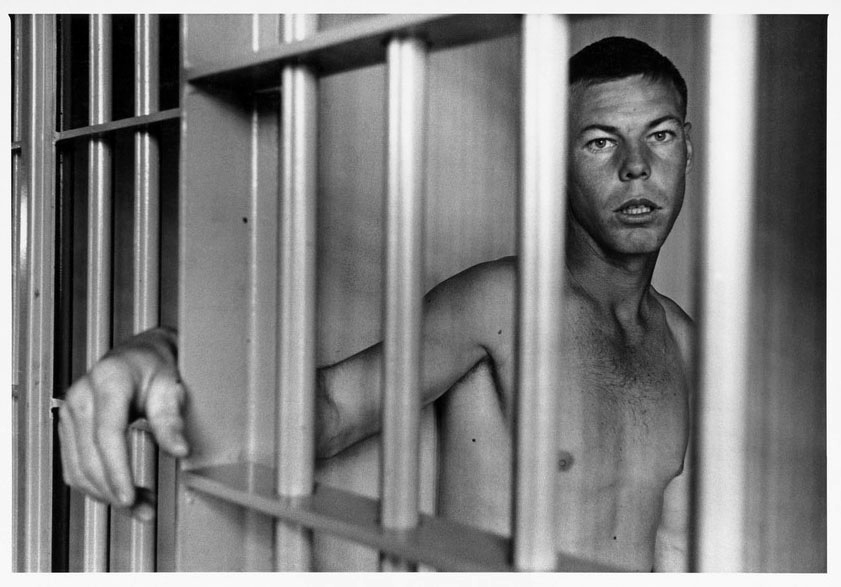


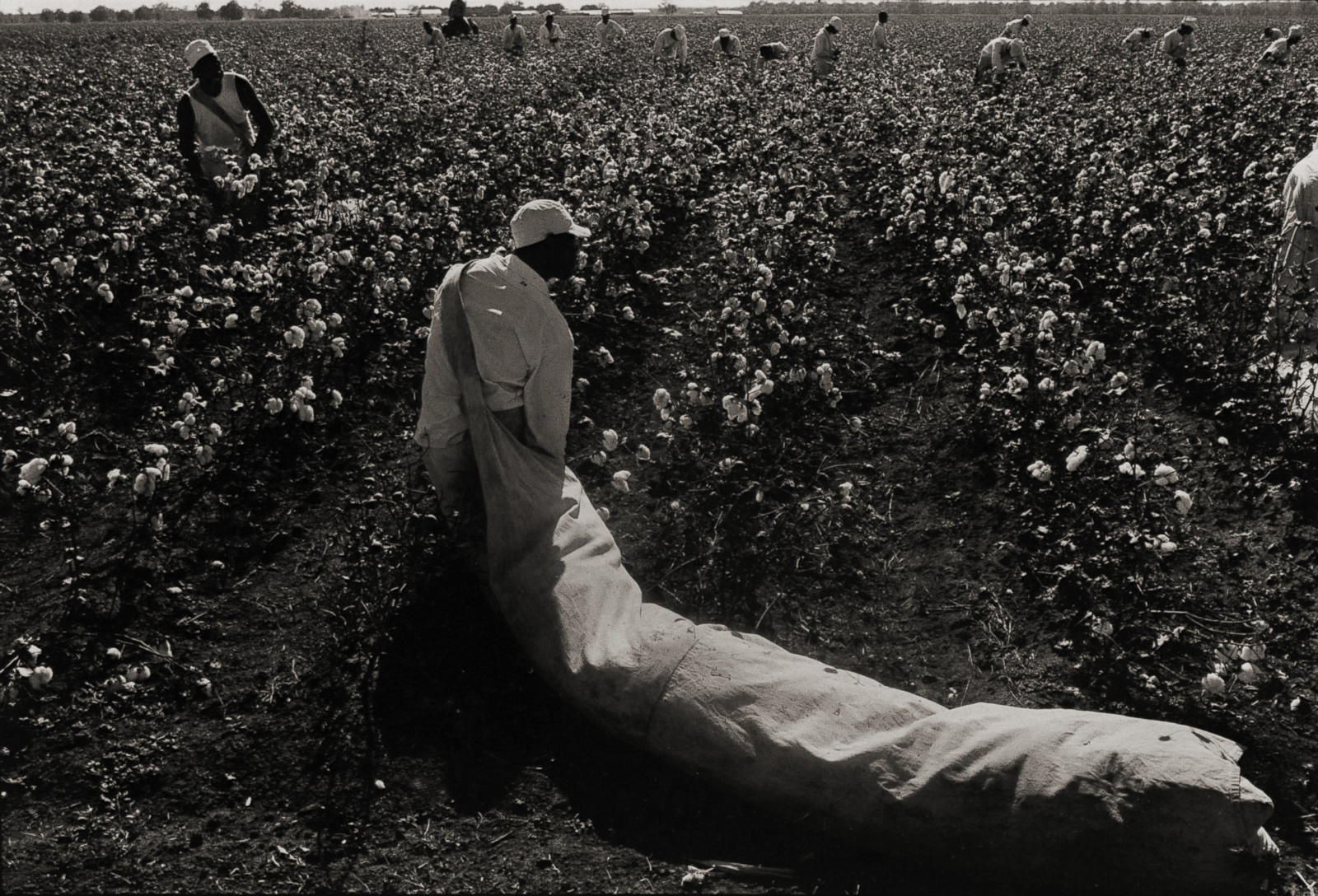




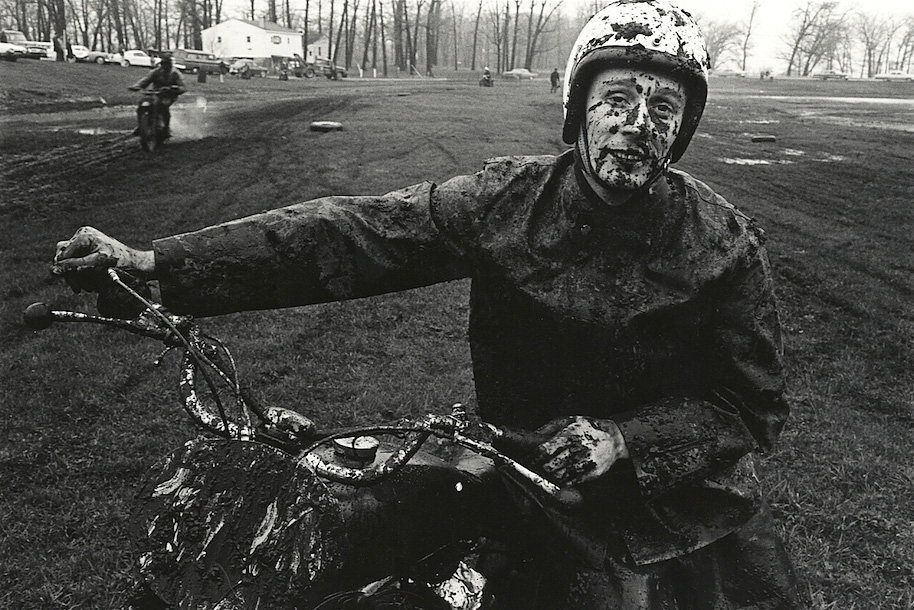



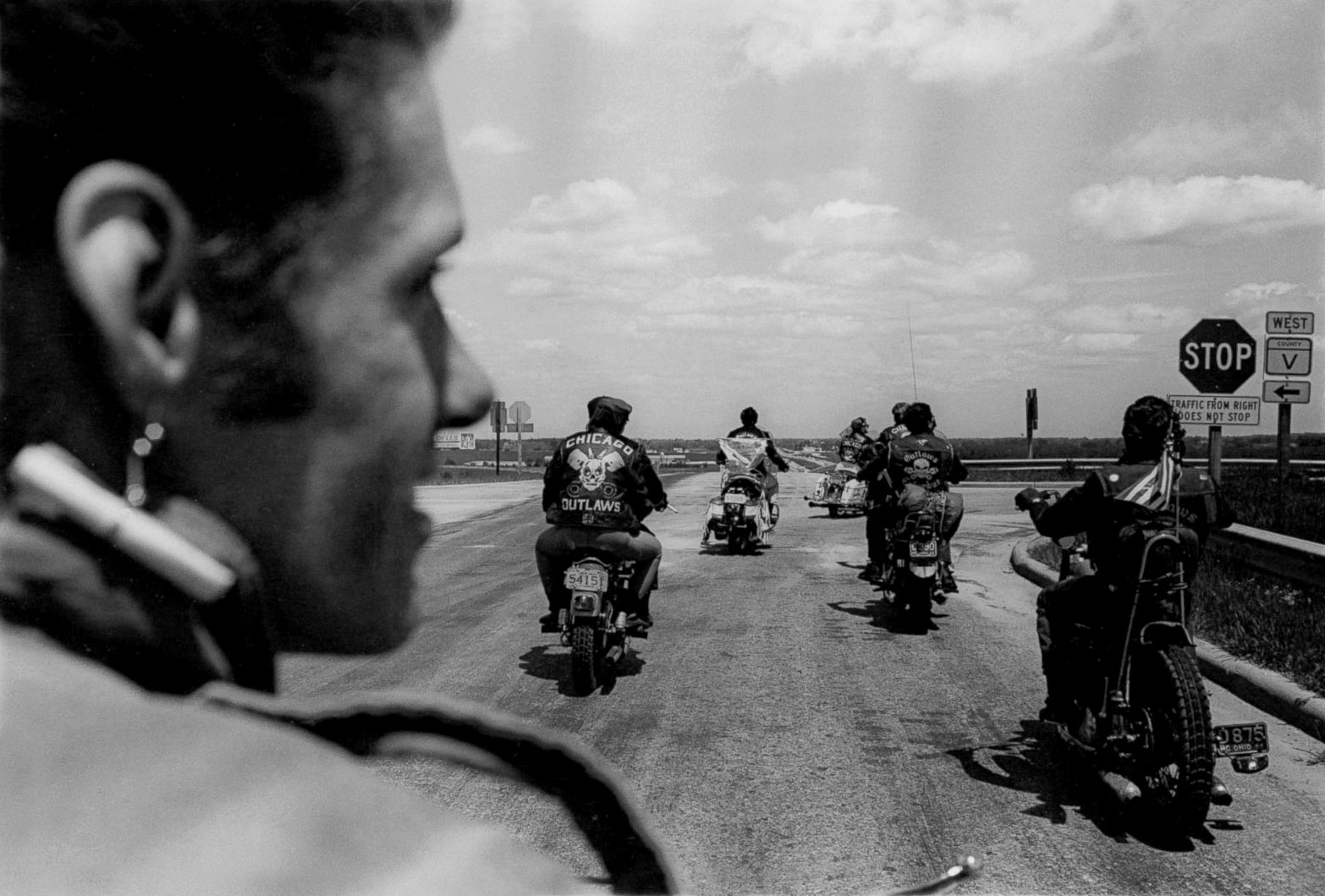

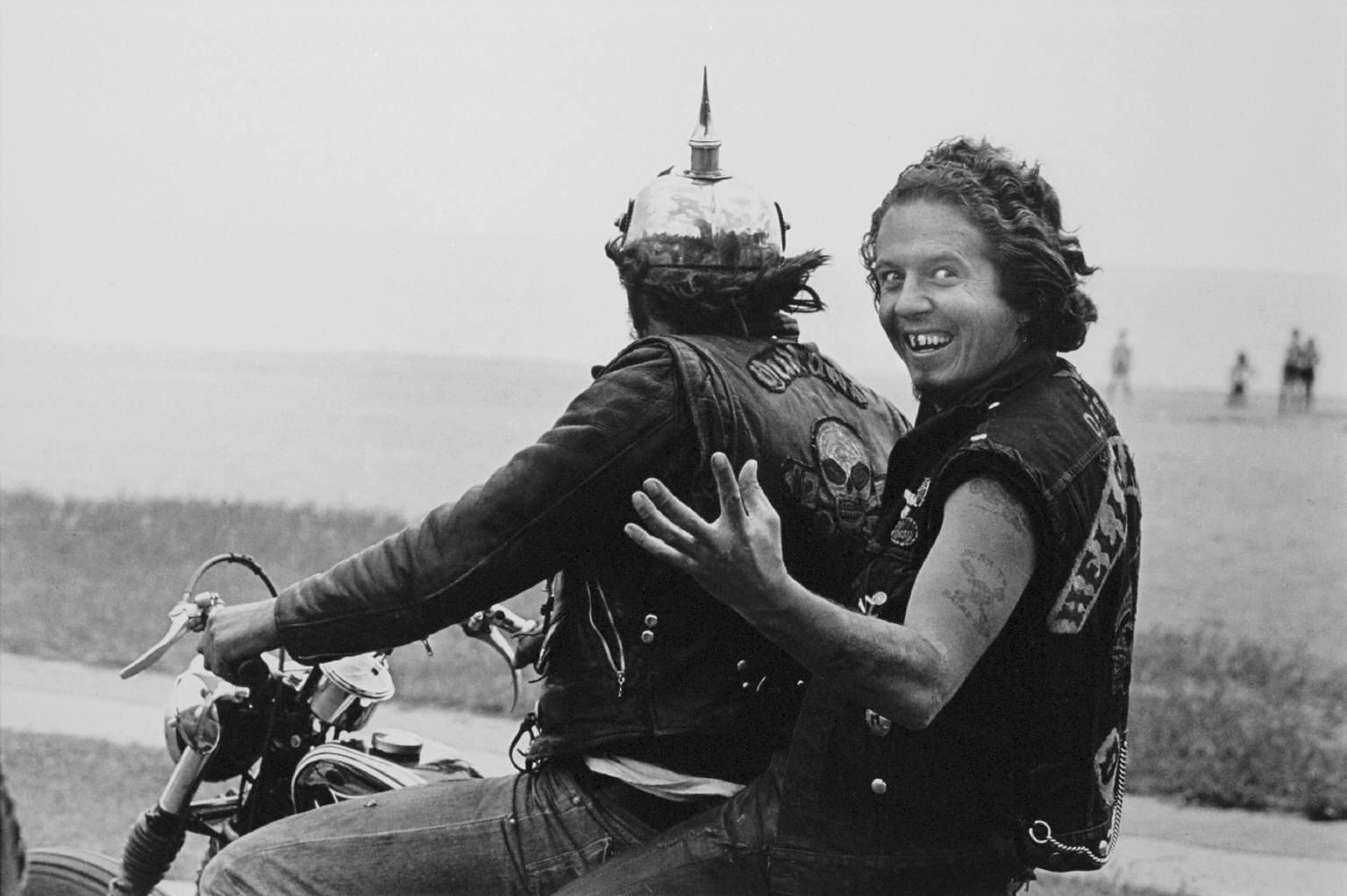

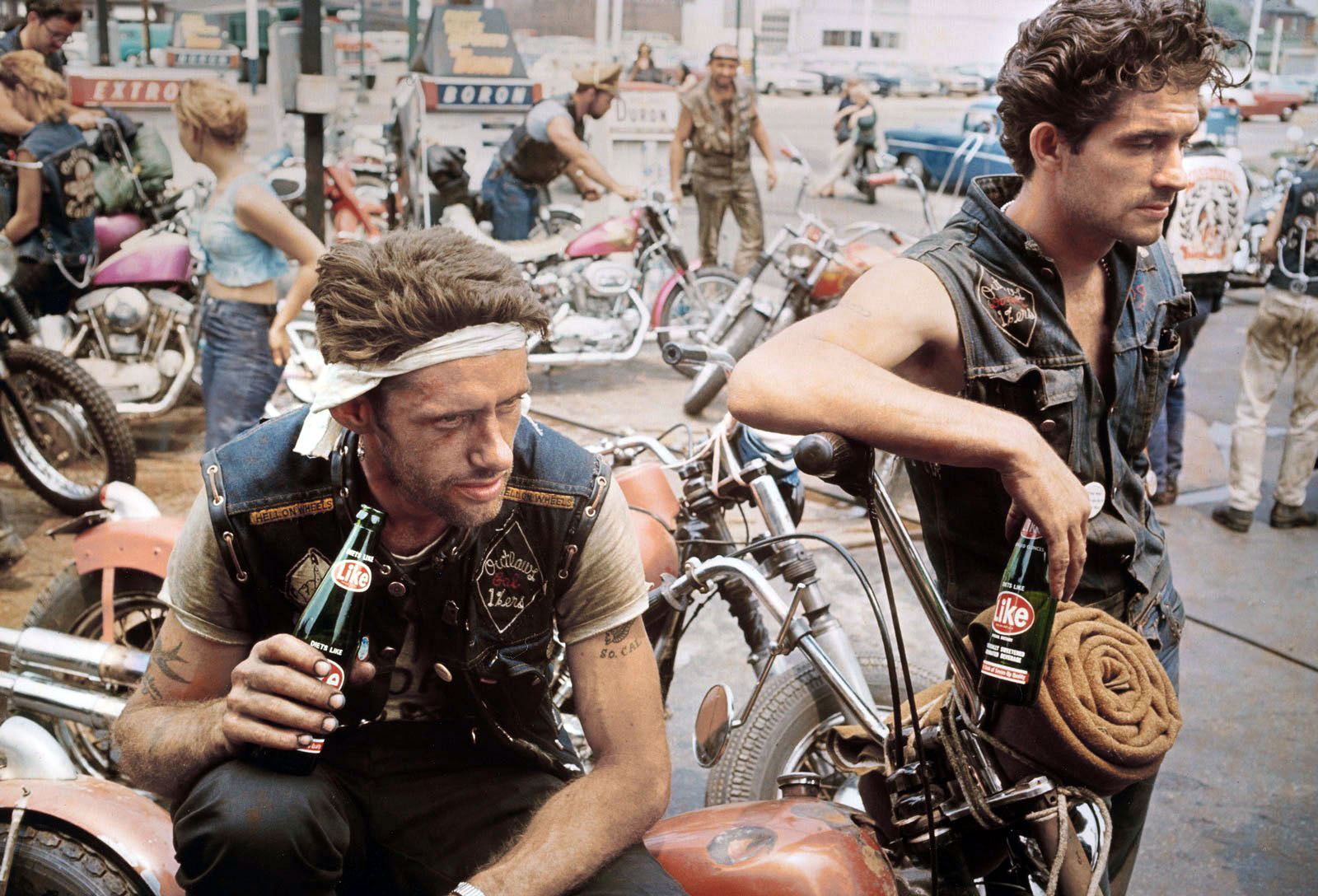

















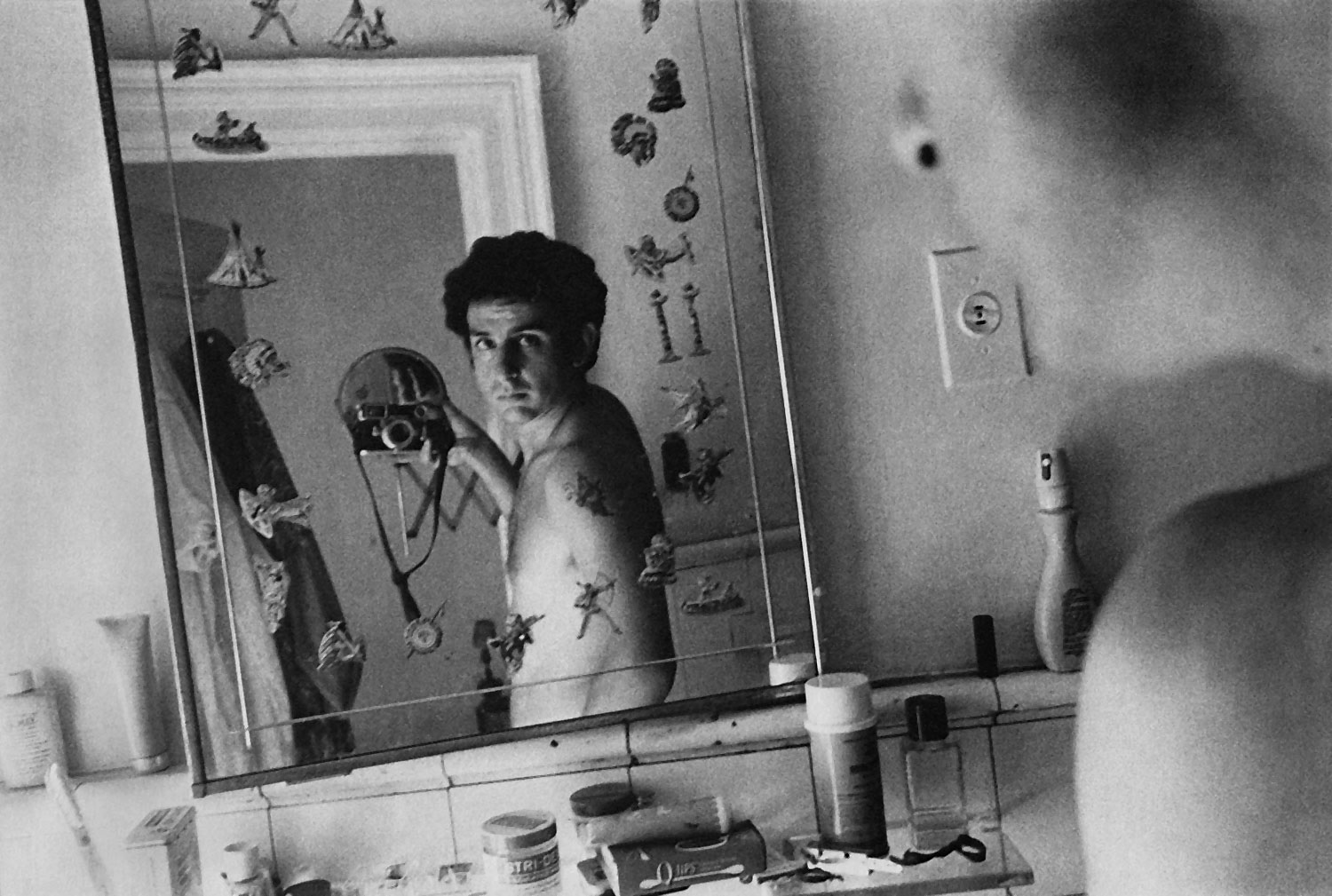
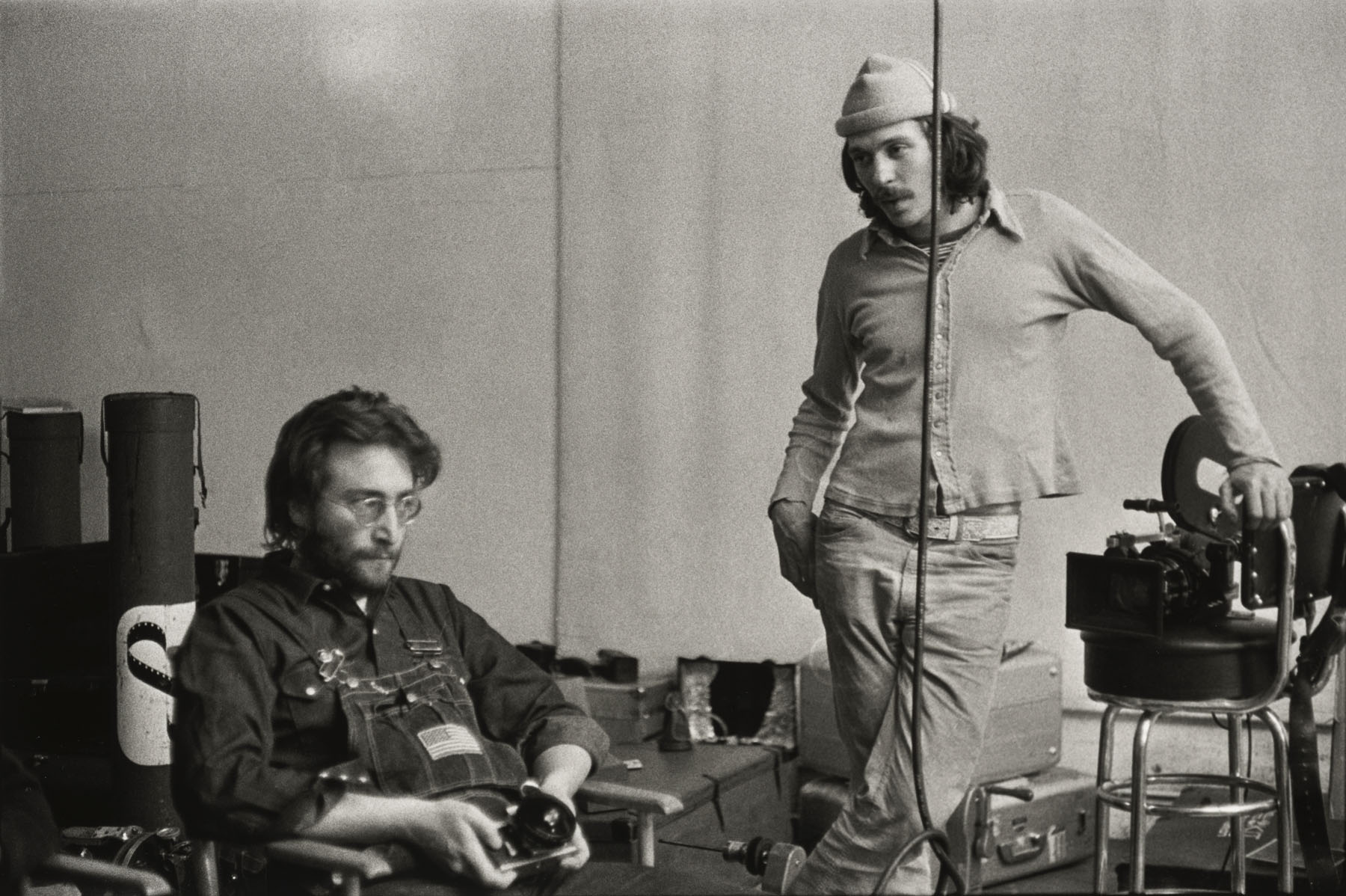



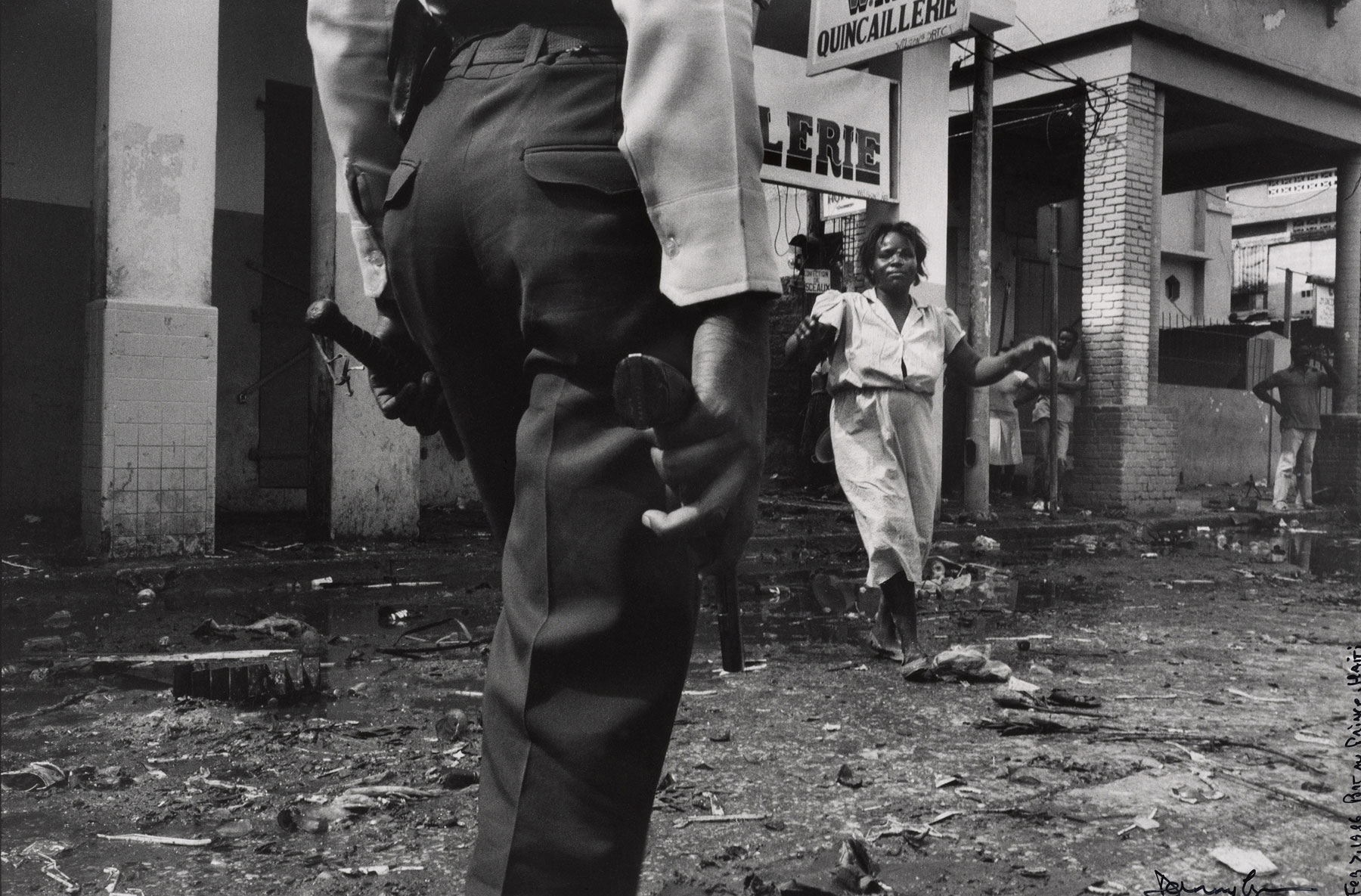


You must be logged in to post a comment.